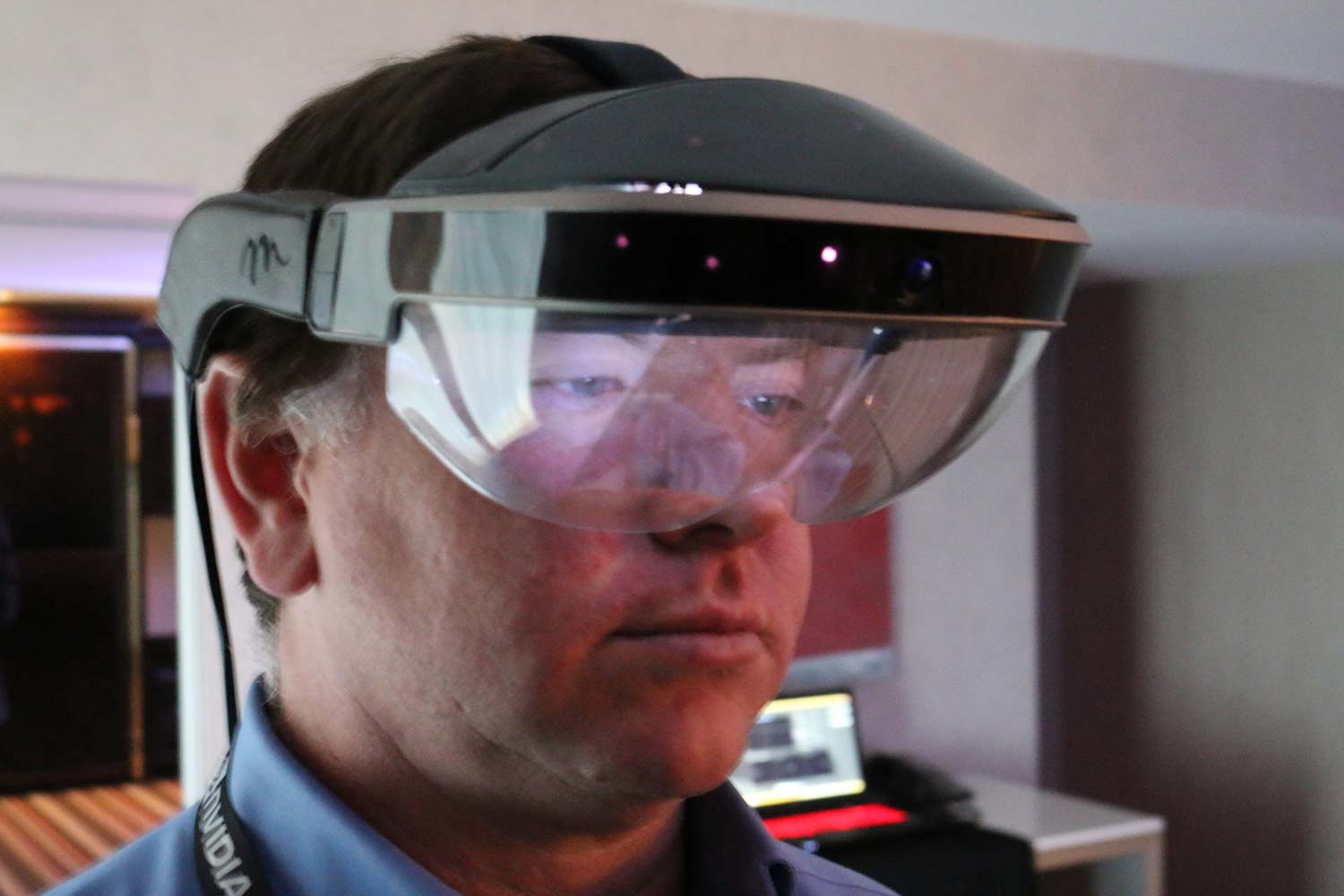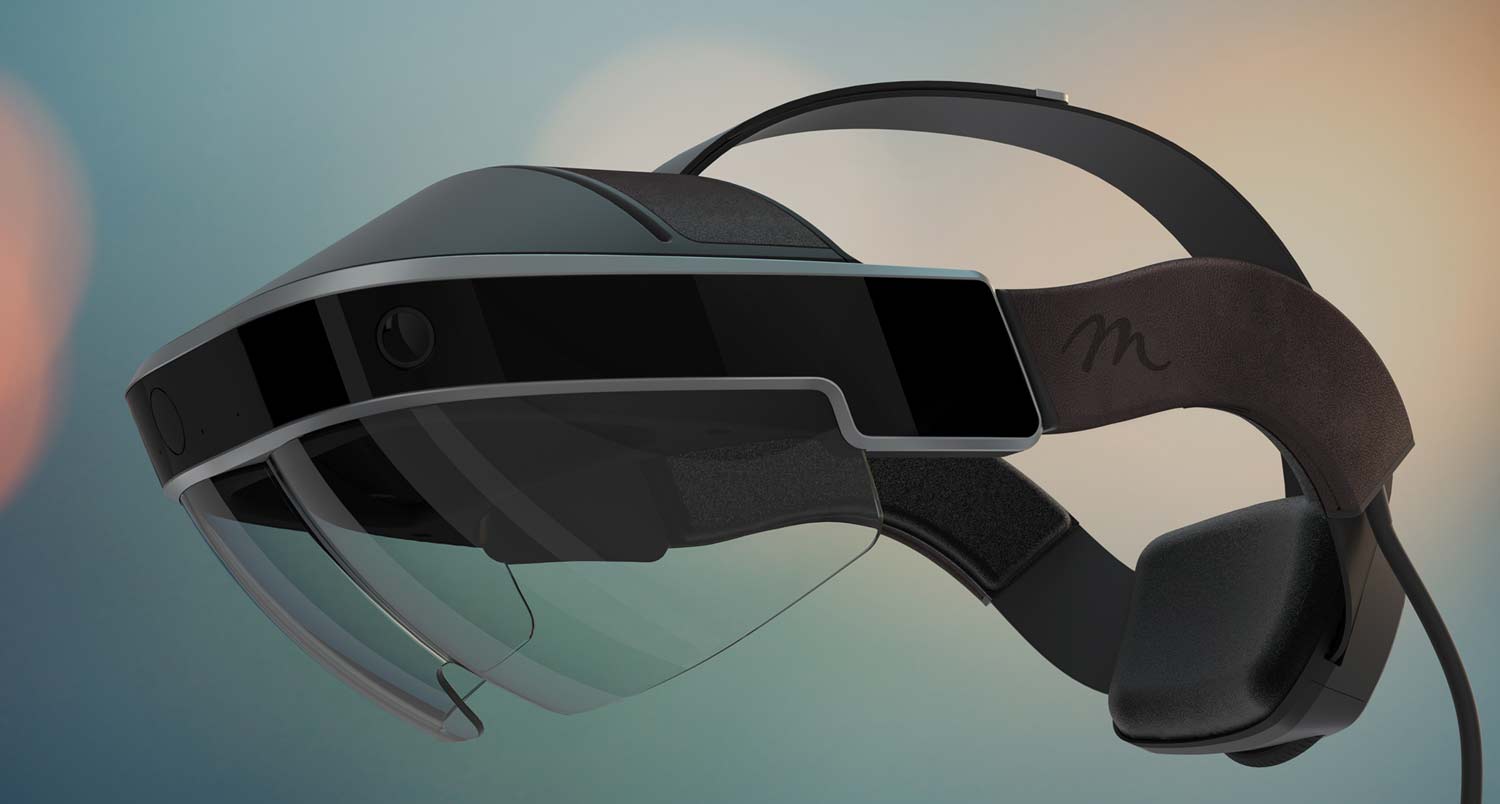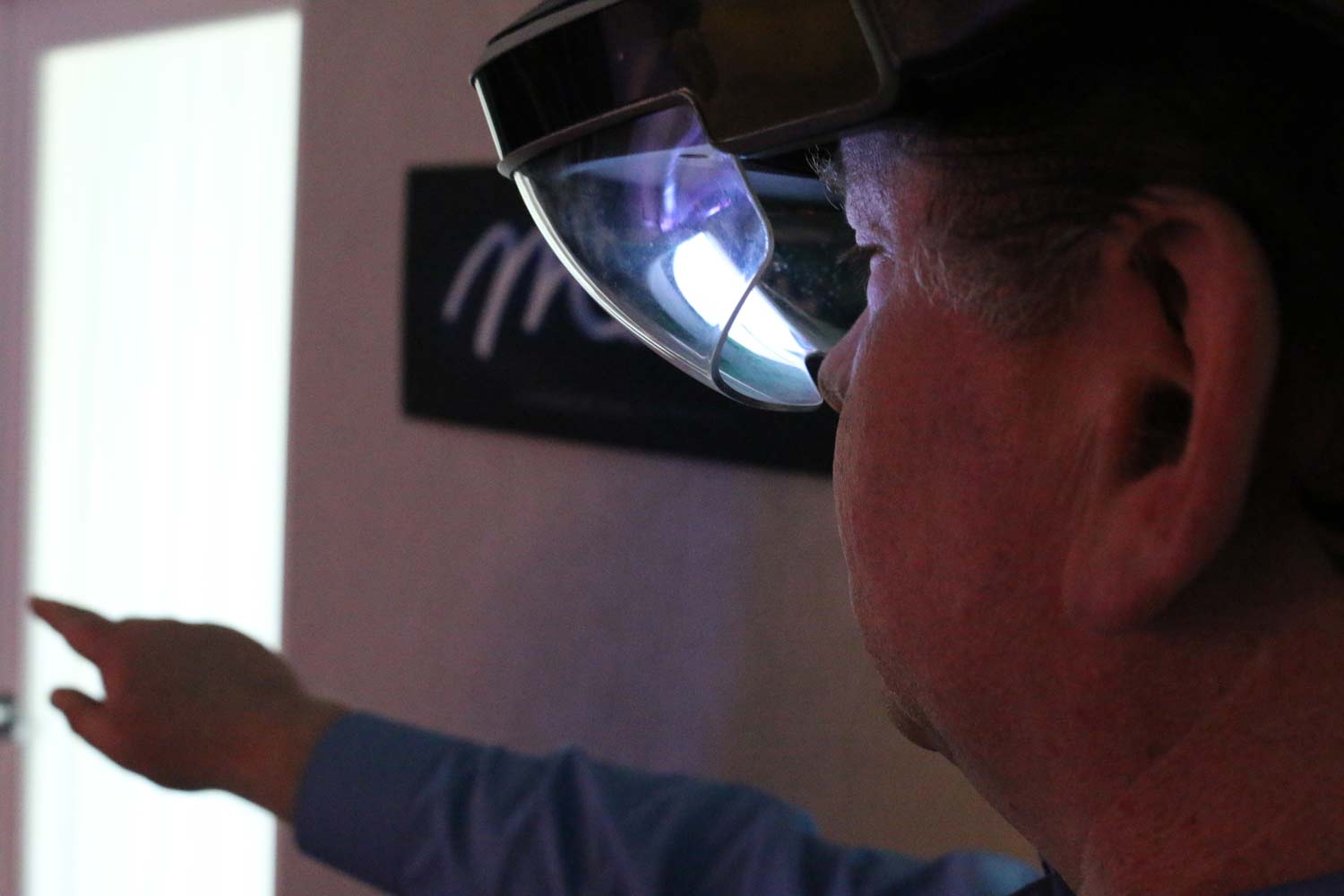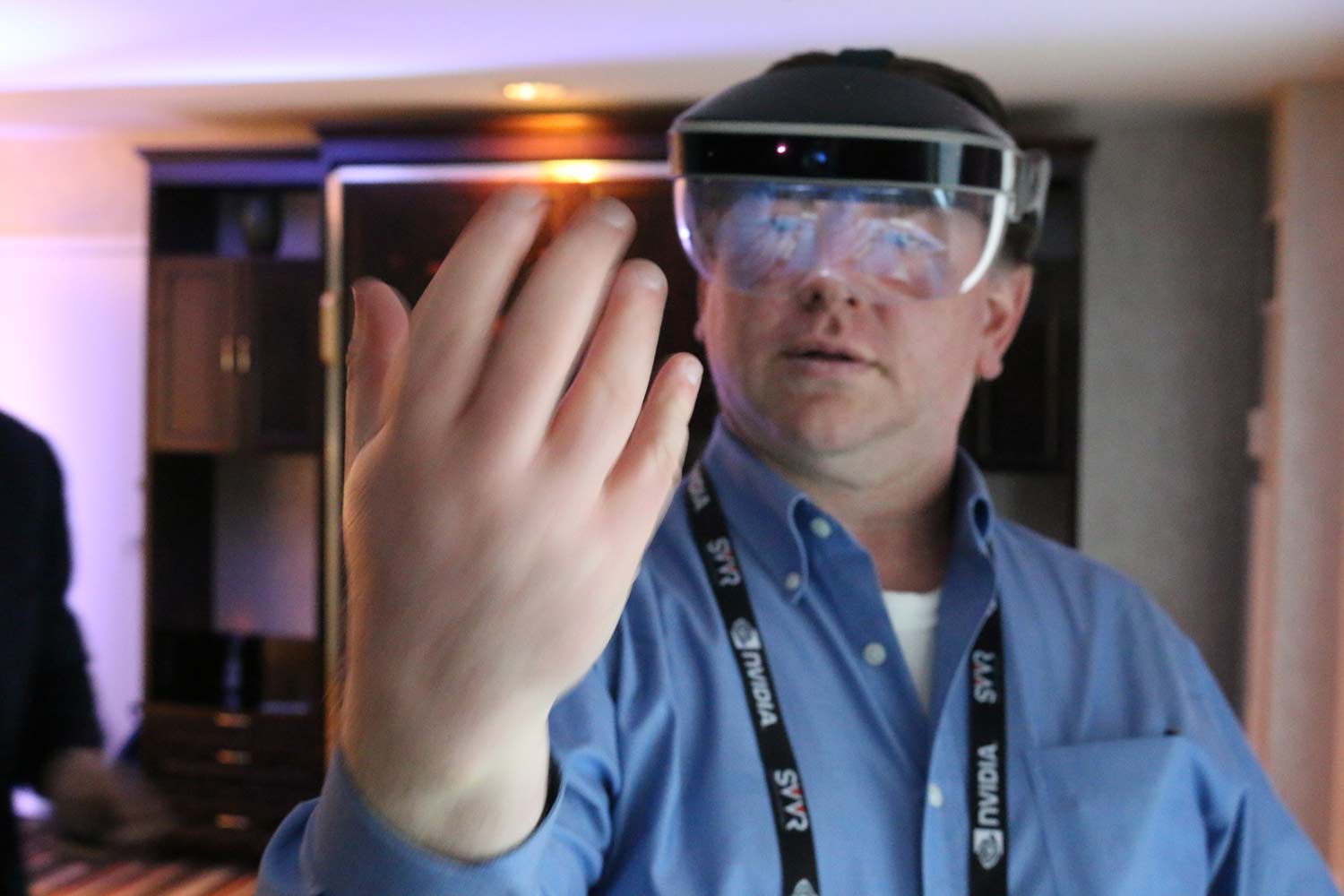I Touched Augmented Reality with Meta 2
The Meta 2 boasts a wide field of view with a 2560 x 1440 resolution, raising the bar for augmented reality headsets.
SAN JOSE, Calif. — I stared at an e-commerce website, when suddenly the pair of sneakers I was eyeballing popped out in front of me. That's not unusual when you're wearing a pair of augmented reality glasses. But since I was testing out the new Meta 2 headset, I could reach out and — by making a grabbing gesture — grab hold of the virtual sneakers. Using both hands, I could grab the sneaker by both ends and stretch it, enlarging it for an up-close look at all its contours.

It's one of the many impressive things you can do with the Meta 2, the newest version of Meta's AR headset. And if Meta has its way, the headset will be in the hands of more developers later this year to create apps that can take advantage of the device's feature set.
Meta took the wraps off the Meta 2 in March. The headset boasts a wide field of view — 90 degrees, which is a 4x improvement over the original Mega headset. It has a 2560 x 1440 resolution, with a pixel density so high you can't make out individual pixels, even when staring at a recreation of the earth or a pair of oversized sneakers.
And as I learned from that sneaker demo, the Meta 2 has a sensor array for positional tracking and detecting hand motions. The Meta uses scanning localization and mapping where multiple sensors fuse data together to create a model of the world around you in real time. And that model is continuously updated so that virtual objects remain where you position them.

Other features in the headset include a 720p front camera and a four-speaker near-ear audio system — all the better for hearing other people on video conference calls. The Meta twist? The people on the other end of the line pop out like holograms instead of appearing flat on a screen and they can hand over virtual objects to you using Meta 2's direct hand interaction capabilities. The headset is a tethered device that connects to a PC running Windows 8 or 10.
Meta is taking preorders on the $949 Meta 2 developers kit, with an eye toward a third quarter ship date. The goal is to put the headset in the hands of developers, Meta vice president of sales and partnerships Ryan Pamplin told me, with commercial users following within a year.
There will be plenty for those users to do with the Meta 2 headset, based on a demo of the device I saw during this week's Silicon Valley Virtual Reality expo. Productivity mavens will particularly enjoy the ability to conjure up multiple virtual displays on their Meta headsets — at one point in the demo, I had 10 different displays open in front of me, which I could rearrange just by reaching out and pushing one display into another's place.
The Meta headset interacts with input devices, too, as I started typing on a physical keyboard, and my words appeared in a Google Doc floating in my eyeline.
The graphics capabilities are where the Meta 2 really shines. One part of the demo featured a human body with its various systems popped out in front of me. I could push the systems back into the body to get a better look at how they intertwined with one another.

It's here that you really appreciate the wider field of view on the Meta 2. Holographic objects appear in their entirety with little of the cropping that can occur with rival AR headsets. That's important because it makes images seems more real, allowing you to focus on the task at hand. As much as I appreciate Microsoft's HoloLens — and I've been wowed by multiple demos of the headset, whether it's exploring Mars or interacting with other HoloLens users — a more limited field of view can jar you right out of augmented reality when the object you've been staring at partially disappears with the tilt of a head.
While productivity seems to be the focus for the Meta 2, there are entertainment possibilities as well. I was able to watch a movie on a virtual TV screen that I could shrink and enlarge at will. Moving closer to the virtual screen didn't cause any pixelation, and staring at it from the side revealed a screen thinner than any HDTV maker could ever construct. For that reason, Meta's Pamplin sees a future where an AR headset could replace all your screens — not just your computer display, but your television set and even your mobile devices.
That's a way off since the Meta 2 still needs to find its way to consumers. For now, Meta is focused on challenging the way we interact with computers — no small task in and of itself. "It's not us versus Magic Leap and HoloLens," says Pamplin, referring to rival AR offerings. "It's us versus the old computing paradigm."
Meta will have some work to do in that regard. As much as the Meta 2's wide field of view and high resolution help the AR experience, the headset still has some graphical hiccups to iron out. In that video conference call, my holographic counterpart looked noticeably jagged around the edges, enough to where a user might focus on that rather than conversation.

Still, the Meta 2's natural gesture controls are promising. I only wore the headset for 15 minutes at most during the demo, but there wasn't much of a learning curve to reaching out and grabbing objects. I just had to remember to close my fist all the way on a grab and listening for the audio cue that I had a virtual grip on something. By the end of the demo, I was dragging objects around like a boss.
It'll be a while before the Meta 2 finds its way onto more faces, and much will depend on the work that developers do once their headsets ship arrive later this year. But from what we've seen so far from Meta 2, it joins the HoloLens as an AR headset worth keeping an eye on.
Sign up to get the BEST of Tom's Guide direct to your inbox.
Get instant access to breaking news, the hottest reviews, great deals and helpful tips.
Philip Michaels is a Managing Editor at Tom's Guide. He's been covering personal technology since 1999 and was in the building when Steve Jobs showed off the iPhone for the first time. He's been evaluating smartphones since that first iPhone debuted in 2007, and he's been following phone carriers and smartphone plans since 2015. He has strong opinions about Apple, the Oakland Athletics, old movies and proper butchery techniques. Follow him at @PhilipMichaels.

